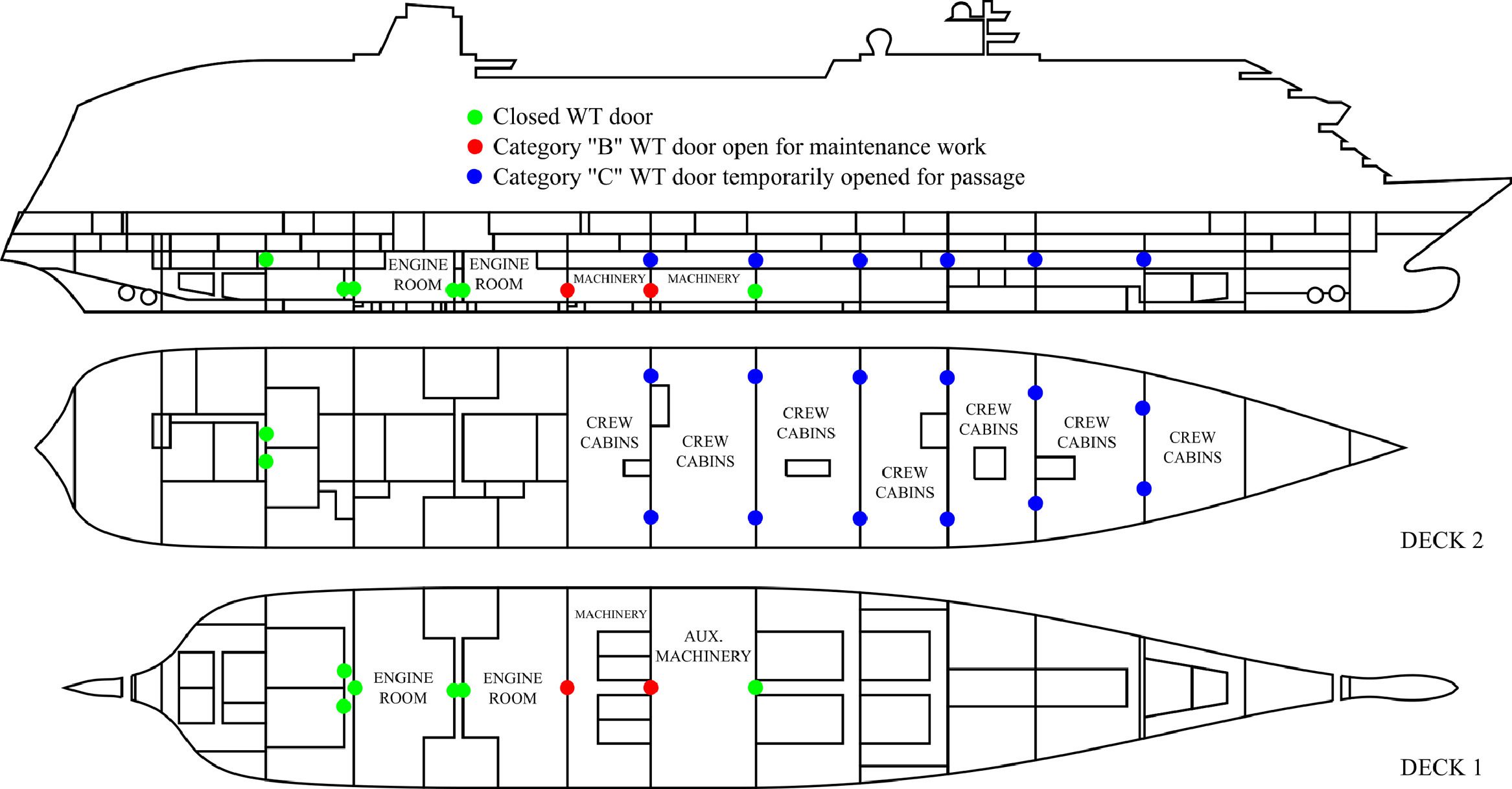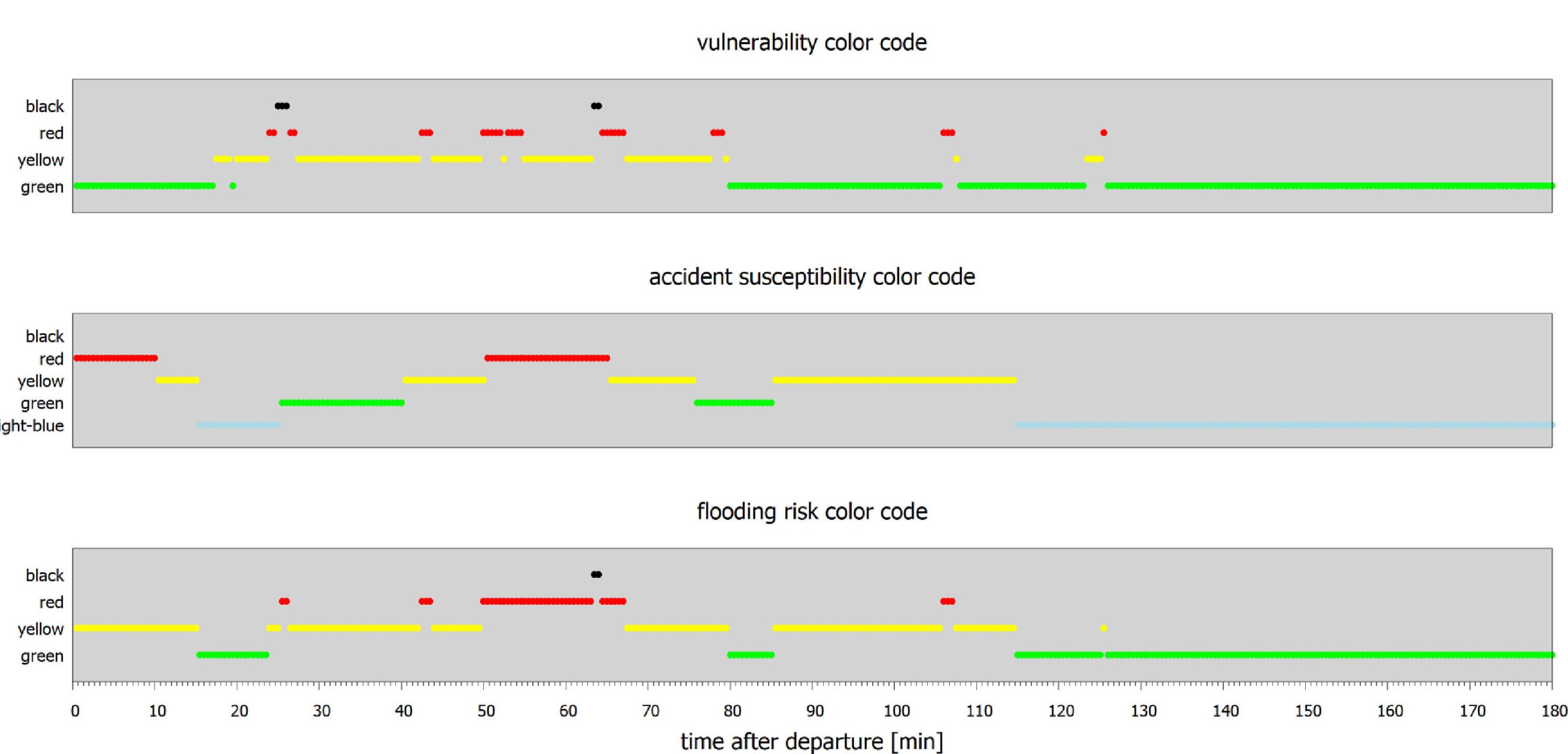August 11, 2022
How a new way of monitoring flooding risk increases safety onboard passenger ships – case studies
In a previous blog, we described how NAPA has developed an innovative framework to conduct a rapid assessment and real-time monitoring of operational flooding risks for passenger ships. In this article, we go beyond theory and look at two case studies that showcase how this new approach will work in practice and improve the safety of crew and passengers drastically.
For this, we examined two situations when: a) the crew encounters high flooding risks in accident-prone waters; b) when maintenance work requires some watertight doors to be open for an extended period.
Combining vulnerability and susceptibility indexes, the new flooding risk framework assesses and monitors flooding risk on passenger vessels based on the actual operational condition of the ship. It can rapidly evaluate a ship’s vulnerability to flooding for any combination of open or closed watertight doors. Additional pre-calculated vessel-specific damage stability risks are also used to enable rapid flooding risk assessment. Crucially, the framework shows how the risk evolves throughout the voyage depending on factors such as the waterway complexity and surrounding maritime traffic.
As a result, rather than measuring the risk purely as a statistical probability, the framework accounts for real-life factors, defining both susceptibility and vulnerability in a way that informs crews on the available decisions that can be taken to reduce risk. A susceptibility index distinguishes dangerous situations from moderately hazardous and non-hazardous ones, while a vulnerability index estimates the decrease in the survivability of the ship due to open watertight doors and factors such as sea state. The framework distinguishes between various accident scenarios by assigning them a level ranging from low, moderate, high and very high. Although a qualitative result, it is based on extensive computations.

A color-coding system is used to distinguish among risk levels and to foster clear communication in an emergency. For good visibility conditions, the highest risk (color-coded black) occurs when a ship is exposed to hazardous encounters with other ships or land, and the vulnerability is also high or very high if numerous watertight doors are open. At the other end of the scale, a ship faces low risk (color-coded green) when it is safe from hazardous situations and few, if any, doors are open.
That’s the theory bit. Now, let’s look at how this adds real value in actual onboard situations.
The new framework in action
We simulated two cases using a 63,000 GT cruise ship, with a realistic operational loading condition resulting in a draft of 7.2m and an intact metacentric height of 2.62m. The first case looked at why maintenance work should be planned with accident susceptibility levels in mind to avoid any detrimental impact on safety. The second examined how assessing ship vulnerability and accident susceptibility before entering accident-prone areas can help increase safety, ease navigation and increase crews’ confidence.
Case study A: assessing the risks of maintenance work

This case study demonstrates how the number of watertight doors left open (vulnerability level) interacts with accident susceptibility (route, narrow fairway) to influence the overall vulnerability to flooding.
Real AIS data for a voyage from Rijeka, Croatia to Trieste, Italy, was used. After departure, the ship sailed in the Kvarner Gulf with high accident susceptibility, due mainly to the shallow waters on both sides of the fairway. The significant wave height was assumed to be small. Maintenance work, requiring two watertight doors on deck 1 to be open for an extended period, was undertaken 20 minutes after departure and continued for 60 minutes. Meanwhile, watertight doors in the crew cabin areas on deck 2 were opened randomly, once an hour on average.

Soon after the maintenance work started, there was a short period when six watertight doors were open simultaneously, resulting in a very high vulnerability level. At this specific moment, the accident susceptibility was low (green), and consequently, the risk level became high (red). Later, about 63 minutes after departure, five watertight doors were open, resulting in a very high vulnerability to flooding. At the same time, accident susceptibility was high due to the narrow fairway, and this combination resulted in very high (black) operational risk for a short period of time. During the maintenance work, the risk level remained high or very high (red or black) for nearly 20 minutes.

This case study makes it clear that maintenance work should be planned so that it is not done when high accident susceptibility levels are expected.
Case study B: Operation in a high accident susceptibility area
In the second case study, the ship sailed from Catania, Italy to Valletta, Malta. After midnight, when the ship was approaching Valletta, both traffic and waterway complexity increased, resulting in a very high accident susceptibility.
All watertight doors were primarily closed, but the doors in the crew cabin areas on deck 2 were randomly opened. At most, two watertight doors were open simultaneously, and the vulnerability to flooding remained low (green) or moderate (yellow). However, when approaching Valletta, the accident susceptibility rose to high (red) or very high (black), and consequently, the flooding risk was also high (red). At this specific point in the voyage, any maintenance work requiring watertight doors to be open would have further increased the vessel’s vulnerability and caused a very high overall risk level.

This demonstrates how an increase in both traffic and waterway complexity could result in very high accident susceptibility, even when few watertight doors are open. However, this result does depend on the location of the doors and their importance to vessel safety under SOLAS. Some may not significantly increase the risk, even when the ship is operating in areas with high susceptibility.
Better situational awareness for improved decision-making
So, what do these case studies demonstrate for crews and ship operators? First, the framework increases situational awareness by giving crews better visibility of risk levels and enabling them to take proactive risk mitigation measures in real time.
Second, they provide crews with a better understanding of how risks can change throughout a voyage, which is key to improving the safety culture onboard. The continuous monitoring of the risk level can help improve operational practices, and, in the long term, provide useful information for designing safer general arrangements for ships, with a reduced need for watertight doors.
Further research is still needed, especially regarding the effect of sea state and visibility on susceptibility and vulnerability. However, it is already clear that high flooding risk can easily be encountered in sea areas with high accident susceptibility, especially if maintenance work requires some watertight doors to be open for an extended period.
Our next step is to test a prototype system onboard real ships and gather valuable real-world operational data so that we can develop an even more powerful tool to take passenger ship safety to new heights.
Based on “A framework for onboard assessment of monitoring of flooding risk due to open watertight doors for passenger ships” by Pekka Ruponen, Jakub Montewka, Markus Tompuri, Teemu Manderbacka, Spyros Hirdaris. Published in Reliability Engineering & System Safety, Volume 226, October 2022